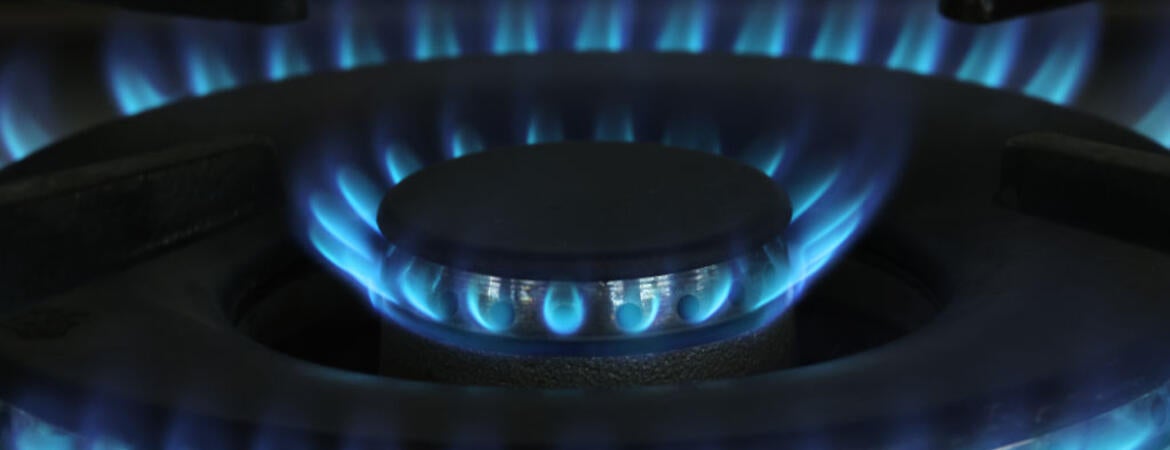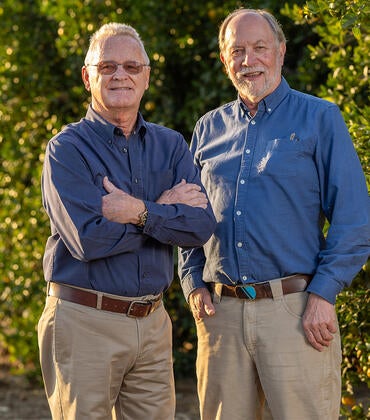
One-third of U.S. households — more than 40 million homes — cook with gas. There has been much consternation about the danger of gas stoves in the news lately and talk of banning them since a Consumer Product Safety commissioner recently suggested the move. Environmental Protection Agency data show gas stove emissions, which include formaldehyde, carbon monoxide, and nitrogen oxides, can reach unsafe levels. Los Angeles, San Francisco, Berkeley, and New York will require new buildings to be electric in the future.
Riverside City Council recently passed limits on gas-stove installation. And the UC system's Policy on Sustainable Practices puts major restrictions on future natural gas installations. On the UC Riverside campus, there is a shift away from natural gas, with no natural gas at the ongoing North District project. Electric induction stoves, which generate energy from an electromagnetic field below a glass surface, are used at residential dining halls including Lothian and Glasgow.
In a poll published in the January 19 UCR Life newsletter, only 48 of 269 respondents — or 17.8% — thought gas stoves should be banned.
We sought gas-stove perspectives from the scientific and practical perspectives, approaching Francesca Hopkins, an assistant professor of climate change & sustainability and an expert on methane gas; Brian Siana, an professor of physics and astronomy and UCR's associate faculty director of sustainability, and Gustavo Plascencia, safety, sustainability, and projects manager for UCR Dining, Hospitality & Retail Services.
Q: Can you speak to the Stanford study that found methane leaking from natural gas-burning stoves inside U.S. homes has a climate impact comparable to carbon dioxide emissions from 500,000 gasoline powered cars?
Hopkins: Methane is a more potent greenhouse gas than CO2, which is why relatively small methane leaks from natural gas stoves can have a large climate impact equivalent to half a million cars. Many scientists think that tackling methane is the key to starting to address climate change because, in addition to its powerful warming effect, it has a short lifetime in the atmosphere. That means we can start to see atmospheric methane decline globally on timescales of a decade or less, which will reduce the amount of global warming we’ll experience right away. In contrast, CO2 stays in the atmosphere much longer and once it’s up there, it won’t come down for hundreds of years.
Q: Much of natural gas consumed – and therefore emissions produced – is from furnaces and hot water heaters. Why are gas stoves the target of the scrutiny?
Hopkins: Gas stoves are much more important for health than furnaces since they’re located in the hearth of the home, where we’re much more likely to breath their emissions compared to hot water heaters that are usually installed in the garage or outside the house. A gas stove works by combusting natural gas fuel, producing byproducts such as NOx, a “criteria air pollutant” that is the same key ingredient to smog coming out of the tailpipes of cars. NOx is an oxidant, so it causes damage to lungs. The best thing you can do to reduce the health risk of gas stoves is to run your range hood any time you use your gas stove or cooktop. That will vent out the NOx produced, and reduce your exposure.
Q: Electric is produced largely by burning fossil fuels. So is switching to electric stoves achieving anything, or is it net-neutral in terms of greenhouse gases produced?
Hopkins: Modern electric stoves, such as those with induction cooktops, are more efficient than natural gas stoves. Also, our electricity supplies are getting increasingly cleaner with greater production coming from solar and wind. So switching to electric stoves is definitely beneficial for reducing greenhouse gas emissions.
Siana: Actually, a little more than half of our electricity on the California grid today comes from non-greenhouse emitting sources (solar, nuclear, wind, hydro, and geothermal), and that's not even counting rooftop solar! So it's not true in California that "electricity is produced largely by burning fossil fuels." And, of course, mandates are in place to increase the amount of renewables and to ultimately get to 90% carbon-free electricity by 2035 and 100% carbon-free electricity by 2045. So electric appliances are actually getting cleaner with time.
Q: Is it possible to make gas stoves significantly more efficient instead of getting rid of them? Would that be sufficient to address the methane-leak problem?
Hopkins: Any time you have a system that handles natural gas, we’ve seen that there is a possibility for methane leaks to occur. It may be possible to check for and repair small leaks from gas stoves in households, but right now I don’t know anyone that does this outside of research, and this might not be the most efficient use of resources in the long run. Ideally, future gas stoves would all come with leak-detection systems so leaks could be identified and resolved quickly. But electric induction stoves are even better than gas in my opinion, both for cooking and the climate.
Plascencia: Small leaks are difficult to detect in commercial kitchens due to the powerful ventilation that is standard in commercial kitchens. As long as the exhaust hoods are on, the fans are pulling any gas and fumes and blowing them outside the building. However, for the typical home, it can be a concern because many homes may not have adequate hoods and ventilation. That being said, while good ventilation will help to mitigate the potential respiratory health risk, it does not address the global warming impacts from the methane building up in the atmosphere.
As far as any anecdotal experience with natural gas leaks, we have found a few gas leaks in facilities in the past where the leaks were large enough for employees to smell the gas and bring it to our attention. One appliance was found to have a leaky valve, which was promptly replaced. Any gas leaks we have experienced in the past have been a concern mainly due to the fire risk.
Q: The energy-use and climate argument for electric induction stoves vs. gas stoves seems easy. Electric induction use up to 90% of energy produced; gas are only 30% efficient. But what are the practical considerations of replacing gas stoves with electric induction stoves?
Hopkins: I switched from gas to an electric induction stove two years ago, and I love it! It’s amazing how fast water boils with induction. The one annoying thing is that induction stoves require certain types of pots and pans that are magnetic.
I just convinced my mom to switch out her gas stove to induction. We made CO2 measurements in her house with a low-cost sensor, and it was shocking how high CO2 levels were inside, hundreds of parts per million above background. It was definitely related to times she used her oven. So even though CO2 (and even CH4) are not harmful to humans at these levels, they are often being emitted along with air pollutants that are harmful, like NOx.
Switching from gas stoves to induction is a step anyone with the means to do so can take to reduce their greenhouse gas emissions, but it's only one step of the many we need to take at the individual and societal level. Gas stoves are only one appliance that can cause methane leaks (others include water heaters, furnaces, and some dryers) — emissions from pipeline leaks are even more impactful for methane emissions than from stoves. One important step that was recently taken by Riverside City Council and other jurisdictions is to require future construction of certain buildings to be electric. That means some new neighborhoods won’t even have gas distribution pipelines. In addition to reducing the risk of methane leaks, it could reduce the risk of fires in the case of an earthquake.
Plascencia: I am concerned for my home, but replacing my gas stove with an induction range would be cost-prohibitive as the equipment costs two to three times as much as a gas stove, and that does not include the cost of adding the necessary electrical connections and induction-ready cookware. So when I cook at home, I make sure to turn on the hood fan and open the kitchen windows to help ventilate the house.
Editor's note: UCR executive chef Lanette Dickerson is also an electric induction fan: "They get to temperature quicker and cook fast," she said when asked to compare electric induction to gas. Btw, the Inflation Reduction Act includes rebates of up to $840 for electric ranges.



